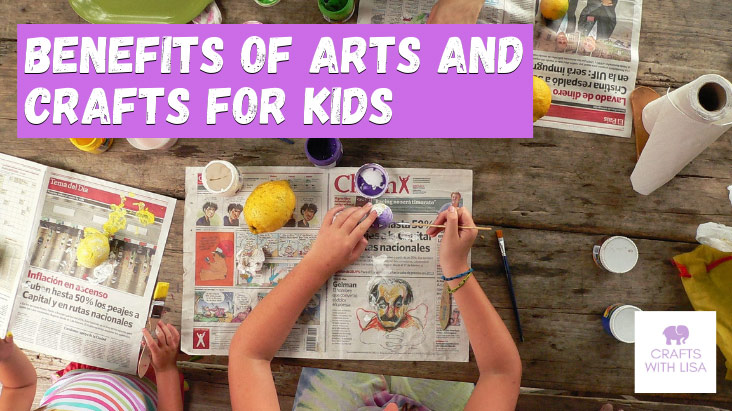Arts and crafts provide endless hours of fun and activity for children. At the same time, they can also provide a bunch of other amazing benefits for kids, ranging from improvements to their fine motor skills to improved problem-solving abilities.
While most parents and teachers instinctively know that these activities are great for children, they often don’t realize the depth of extra benefits that they provide.
1. Fine Motor Skills
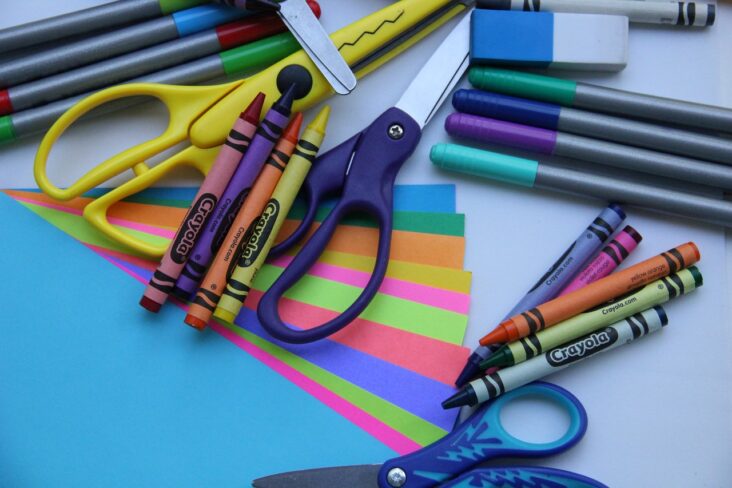
Arts and crafts can help children hone fine motor skills. The act of holding, using, and using a pencil, paintbrush, or crayon helps a child develop dexterity, which is why they tend to get better at coloring within the lines with practice.
Kylie Rymanowicz wrote on the Michigan State University Extension “This development will help your child with writing, buttoning a coat and other tasks that require controlled movements.”
In the same way, crafts require tasks such as squeezing glue bottles, tearing paper, and cutting with scissors. All of these require a level of coordination and control. The more your child practices, the better they get at it.
2. Creativity

Arts and crafts give kids a great outlet to get creative, which is a key skill that can greatly impact their personal and professional lives as they get older.
For example, as they grow up, they will find that creativity and creative thinking are highly in demand in work life, even if they don’t work in the arts.
3. Identification of Shapes and Colors
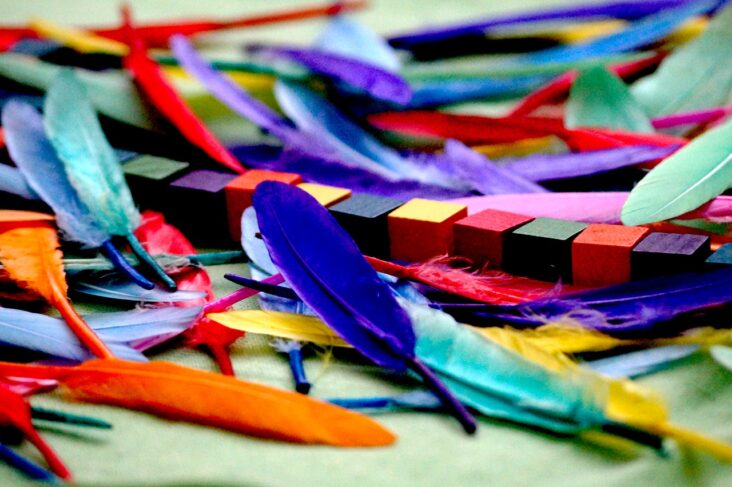
For very young children, one of the most important ways that arts and crafts can benefit them is by helping them to learn their shapes and colors.
Instead of teaching them through repetition and classroom learning, arts and crafts allow them to learn key concepts in a fun and engaging way.
This is really useful for those that favor a “learn by doing” approach. It’s particularly effective for those that are visual learners (up to 65% of the population are visual learners).
4. Self-Expression
Arts and crafts are a great way through which children can express themselves, especially when they find it difficult to put their emotions and thoughts into words.

Through arts and crafts, children learn to communicate their feelings visually. They are able to express themselves in new ways, which can be a boon for shy and quiet children, as well as children with difficulties communicating.
5. Achievement and Self-Esteem
Arts and crafts are a personal and creative outlet. Even if a child is following a set pattern or instructions, they are able to choose the colors and materials they use.
Being able to complete a personalized project gives a child a sense of achievement and accomplishment.
They have demonstrable proof that they have managed to finish a project. Such a sense of accomplishment is great for boosting a child’s self-esteem.
6. Problem-Solving and Critical Thinking
The process of creating arts and crafts requires children to make decisions and develop their problem-solving skills. For example, if a child wants to draw something, they must first decide what they want to draw. If they do not have the colors they require, they must find a way around the problem – whether that be by finding similar shades, choosing a different subject, or something else.
Similarly, crafts pose a series of challenges that children must overcome during each step of the process. They will have to choose between the subject of their creation, the materials that they use, etc.
When faced with difficulties during the process, they must consider all options available to them and pick one to attempt. If their attempt at problem-solving doesn’t work out as originally planned, it’s a learning opportunity for the future and they can try to figure out where to go from there.
In order for children to get the most amount of benefit in the area, it’s recommended to give them an art or craft item that’s reasonably challenging for their skills, but it’s also within their capabilities. This allows them to get into a state of flow and really optimize their learning (read this article to learn more or check out more about Mihaly Csikszentmihalyi’s flow theory).
7. Disconnecting From TV and the Digital World
We all know that kids these days could really do with less screen time! One of the major concerns that parents face in today’s world is that their children spend too much time in front of screens. These range from computers and televisions to cell phones for older children.
Spending time on arts and crafts helps to address this issue. Children have the opportunity to work with their hands and utilize their creativity outside the digital world. While some children may enjoy watching arts and crafts videos, the actual creative process requires them to disconnect and work outside the digital.
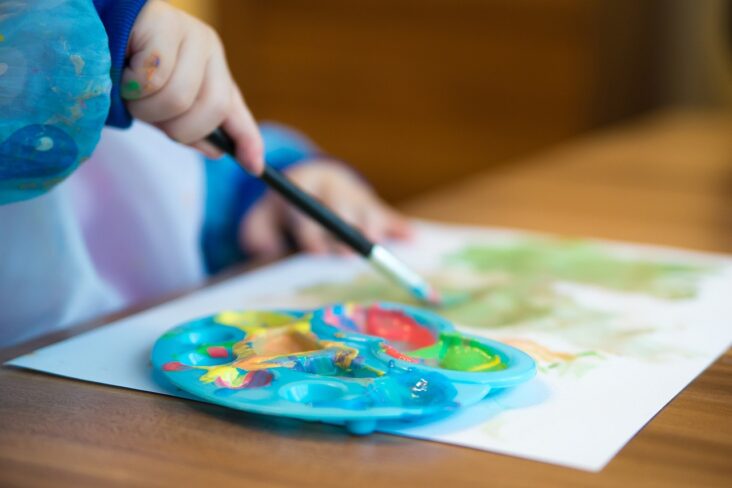
8. More Quality Time with Parents
Finding time to do arts and crafts with children allows parents the opportunity to spend quality time with their children. This gives parents and children an opportunity to bond with each other better, and parents have the chance to get to know their children’s interests more.
9. Improves Social Skills
One of the greatest benefits of arts and crafts is that they can be done both individually and collaboratively. When children make arts and crafts with other people, whether it be adults or other children, it’s a great way to positively interact with others.
By collaborating with someone else on a project, children learn how to communicate and reach a compromise if necessary. They have the opportunity to practice their interpersonal skills in a fun and enjoyable way. Doing arts and crafts with other children can also allow them to develop and build friendships with kids their own age.
10. Self-Regulation
When making arts and crafts, children often have no choice but to wait and take their time. They may need to wait for paint or glue to dry before they can continue working on their projects.
This could certainly encourage an increased attention span. It’s quite the opposite of the digital world, where results are often instant and where they can quickly switch between things without having to wait.
This forces them to learn patience and wait for each step to finish before they can start the next one. If they do not, their craft might not turn out as they expected. As a result, they learn self-regulation, which is certainly a great skill in everyday life!
11. Limited Expense
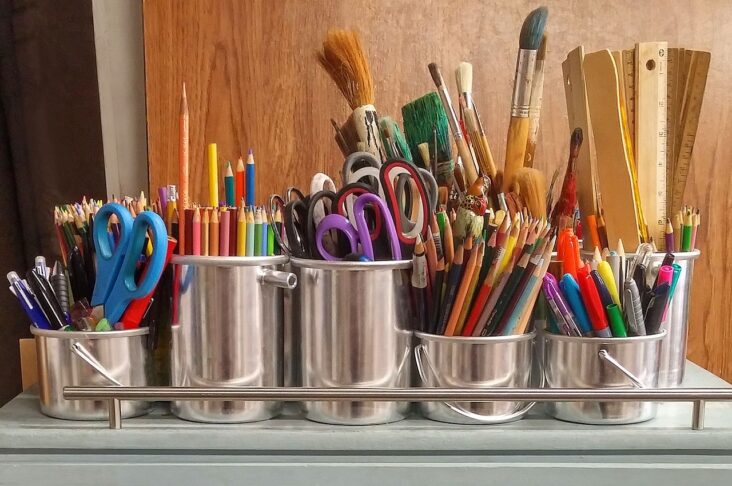
Unlike many other activities, arts and crafts materials tend to be pretty cheap. Most materials are affordable and can be found easily in a local hobby store.
This allows children to learn how to enjoy themselves without the latest and most expensive gadgets. Parents also do not have to worry about having wasted money if their child loses interest halfway through!
It is easier to make arts and crafts a collaborative experience with other children, as parents will not balk over cost either.
Summary
These are only some of the benefits that arts and crafts can provide for children. This is a hobby that people of all ages enjoy, from toddlers to adults.
Often, the only thing that changes is the complexity of the projects that people spend time working on.
By introducing your children to arts and crafts early in life, you give them a foundation for learning essential life skills. These skills are ones that are valuable not only in their childhood but also for the rest of their lives.
Ensuring they have time in their schedules to spend on creative pursuits like arts and crafts will be of benefit to them for years to come. This is why specialists and educators around the world are strong proponents of such activities.

